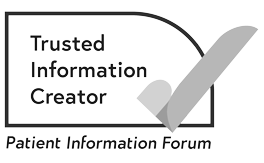Arterial embolisation for kidney cancer
What is arterial embolisation?
Arterial embolisation is when a substance is injected into a blood vessel (artery) in the kidney, to block the blood supply to the cancer. This reduces the supply of oxygen and nutrients to the tumour, which can make it shrink or stop growing.
Arterial embolisation cannot cure the cancer by itself. But it can help control symptoms, such as pain or bleeding.
You may be offered arterial embolisation if an operation is not possible for you.
Related pages
Having arterial embolisation for kidney cancer
Before treatment, the nurse or doctor usually gives you a mild sedative to help you relax. They then inject some local anaesthetic into the skin at the top of the leg (the groin) to numb the area.
A doctor puts a thin, plastic tube (catheter) into a blood vessel in the groin. They guide the catheter using the x-ray images to help. They continue upwards until the tip reaches the artery that carries blood to the area of the kidney with the cancer. They then inject a substance, such as tiny beads, through the catheter into the artery. This blocks the blood supply to the cancer.
Side effects of arterial embolisation for kidney cancer
This treatment can sometimes cause pain in the back. Your doctor will give you painkillers to take regularly for a few days.
You may feel a little unwell for the first few days and have a slightly raised temperature. You will probably also feel tired.
Going home after arterial embolisation
After arterial embolisation, you may need to stay in hospital overnight, or for 1 or 2 days. This depends on how quickly you recover.
Your surgeon or nurse can tell you when you can start doing everyday activities again.
Before you leave hospital, you will be given an appointment for a check-up. This will be at an outpatient clinic. Your doctor or nurse may also arrange for you to have a CT scan to see the result of the treatment.
You will have regular follow-up scans to check the kidney for any signs of the cancer growing.
Related pages
About our information
This information has been written, revised and edited by Macmillan Cancer Support’s Cancer Information Development team. It has been reviewed by expert medical and health professionals and people living with cancer.
-
References
Below is a sample of the sources used in our kidney cancer information. If you would like more information about the sources we use, please contact us at informationproductionteam@macmillan.org.uk
Ljunberg B, Albiges L, Bedke J et al. European Association of Urology Guidelines on renal cell carcinoma. 2023. Available from https://uroweb.org/guidelines/renal-cell-carcinoma
Powles T, Albiges L, Bex A, et al. Renal cell carcinoma: ESMO Clinical Practice Guideline for diagnosis, treatment and follow-up. Ann Oncol. 2024 May 22. Available from: https://doi.org/10.1016/j.annonc.2024.05.537

Reviewer
Consultant Medical Oncologist in Renal and Skin Cancers
Royal Marsden Hospital, London
Date reviewed

Our cancer information meets the PIF TICK quality mark.
This means it is easy to use, up-to-date and based on the latest evidence. Learn more about how we produce our information.
The language we use
We want everyone affected by cancer to feel our information is written for them.
We want our information to be as clear as possible. To do this, we try to:
- use plain English
- explain medical words
- use short sentences
- use illustrations to explain text
- structure the information clearly
- make sure important points are clear.
We use gender-inclusive language and talk to our readers as ‘you’ so that everyone feels included. Where clinically necessary we use the terms ‘men’ and ‘women’ or ‘male’ and ‘female’. For example, we do so when talking about parts of the body or mentioning statistics or research about who is affected.
You can read more about how we produce our information here.




